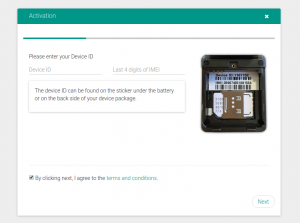

- #Timetool not writing to sd card tasco mac os#
- #Timetool not writing to sd card tasco install#
- #Timetool not writing to sd card tasco serial#
- #Timetool not writing to sd card tasco driver#
- #Timetool not writing to sd card tasco manual#
To pars the NMEA-sentences into usable data I use GPSBabel. The only other time where a potential data loss can happen is observed when the program flushes the accumulated data to the SD. 15 GPS-fixes (1 per second) when cutting off power. Without any fancy coding or buffers, I'm now just writing the data directly to the SD-card and flushing every 15 seconds which has the risk to loose up to 15 seconds of data i.e. GPS_File = SD.open(String(NBR) + ".txt", FILE_WRITE) Īfter trying different approaches I decided to dumb it down to its most basic level. SoftwareSerial GPS_Serial(4, 3) // GPS Module’s TX to D4 & RX to D3 I tried to implement these but failed every time (sorry I'm new to this). Test the SD card with third-party software: For example, you could verify if you can write files to the advertised capacity for your SD card with software H2testw. first, write to a buffer and then in one go to the SD-card always wait till the data is fully written before acquiring the next fixĤ. Now I have the problem that it looks like the Arduino can't write the data fast enough to the SD-card and desyncs with the GPS module. Turn off the camera and remove the SD card. Insert the card in your computer’s SD card slot or a compatible USB connected card reader.
#Timetool not writing to sd card tasco manual#
I have a potentiometer and I wish to write data from that potentiometer to an SD card. download timetool.exe for tasco trail camera social results Filter Results: Facebook Results Twitter Results Instagram Youtube Results Digital Trail Camera Instruction Manual Model: If your Tasco Trail Cam does not seem SD card so that it will not work properly with the Trail Cam. I am attempting to store data on an adalogger. View the SD card contentsdouble click to open the file timetool.exe. Stack Overflow Arduino doesnt write to SD card Ask Question Asked Viewed 2k times 0 Problem I have an Arduino on an Adafruit feather mo.
#Timetool not writing to sd card tasco serial#
Outputting the data to the serial output over Serial.write works fine. Click Update in the Timetool window to automatically fill in the date and time from your computer’s clock. In order to save power, I wish to lower the voltage to 3.3V. This means a total cycle takes 4000us, whereas 9615us is available. The second is the harder option as it involves rewriting quite a lot of the program.
#Timetool not writing to sd card tasco driver#
2) is to recode the simulation so it uses the official ESP32 SD driver code. Reading the data from the sensor takes 3350us, calibrating 5us and writing 550us. Two solutions: 1) is to try different SD cards, some brands work, some do not. Without any fancy coding or buffers, I'm now just writing the data directly to the SD-card and flushing every 15 seconds which has the risk to loose up to 15 seconds of data i.e. When this interrupt occurs, data is read from the sensor, calibrated and then written to an SD card. What works: getting the NMEA data from the module, writing to the SD-card. After trying different approaches I decided to dumb it down to its most basic level. I'm using the Arduino Nano and the NEO-6M GPS Module to get the data. But you still get the prime advantage of using SD cards: Lots of storage capacity in a small form factor.I'm currently building a small GPS-box that's supposed to track my location and write the full NMEA sentence to an sd card. That means you’re technically relying on your USB port and not the SD slot.
#Timetool not writing to sd card tasco mac os#
To format in Mac OS X, you can read here. To get more information, you can refer to SD Card Recovery.
#Timetool not writing to sd card tasco install#
Install and launch this data recovery product. These drives don’t care about SD card write protection and should completely ignore any overwrite restrictions. Connect SD card to your PC (you may need a SD card reader to help the connection). You can get one that looks like a standard thumb drive with slots to plug your SD cards into for $5-$10 at pretty much any office supply store or computer shop. If all else fails, pick-up a an SD memory card reader that plugs into a USB port. At which point, you’d better have some basic PC tools handy. If you don’t do it properly there is a chance the tape could fold and the card will get stuck in the slot. Just be careful to use thin tape and that it’s tight against the card. I have to be honest this has never worked for me, but you’ll find others online who swear by it. I have used multiple XIAO, XIAO expansion boards, and sd cards to no avail.

This will supposedly convince the PC that your SD card is out of write-protected mode. Initially, my sketch wasn’t doing the self-check, by adding Sd2Card card it at least performs the self-check and finds the sd card. Another school of thought says you should also cover the notch on the opposite of the card. What you do is put a small strip of tape over the entire lock switch gap, being careful not to cover the metal strips at the top of the card. But the lock switch can slip or be a little inexact and some people swear that you can fix this with scotch tape.


 0 kommentar(er)
0 kommentar(er)
